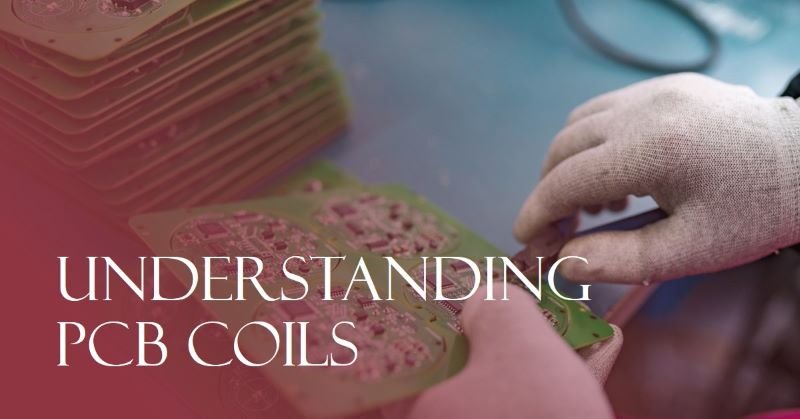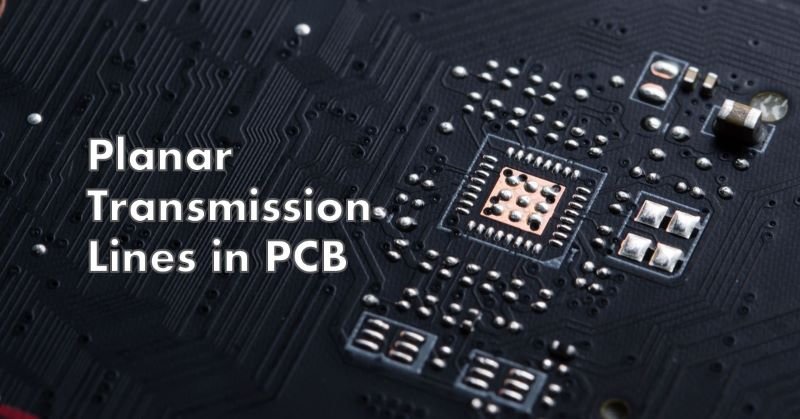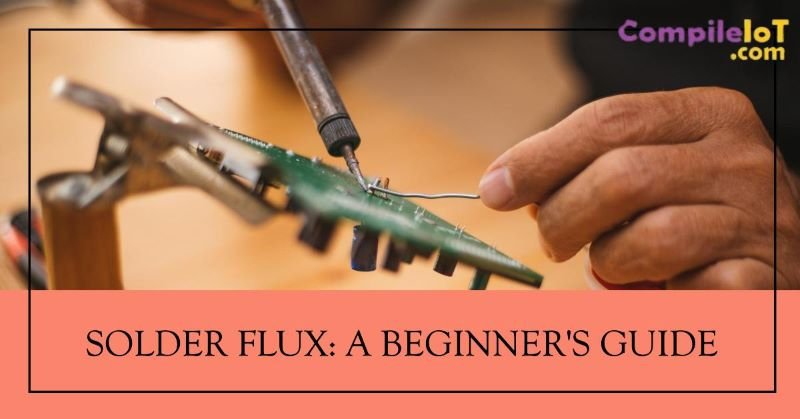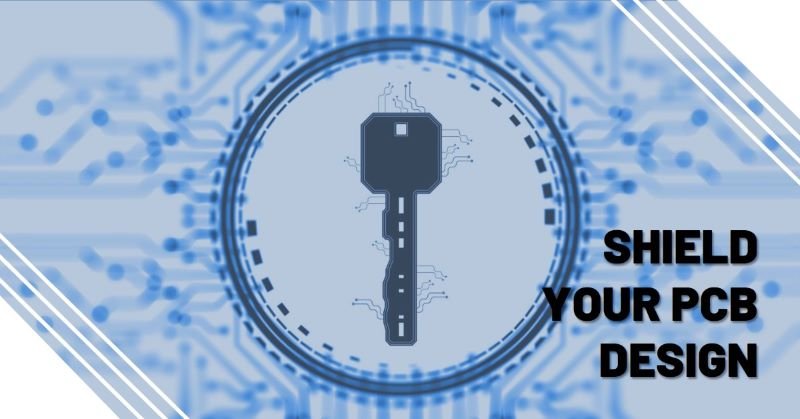PCB Coils Explained: Types, Working Principles and Practical Uses
A PCB (Printed Circuit Board) coil is a type of inductor that is integrated directly into the PCB itself, rather than being a separate component that is mounted onto the board. PCB coils, also known as PCB inductors, are used to store energy in a magnetic field when electrical current flows through them. They play a crucial role in various electronic circuits by providing inductance, filtering signals, and managing energy storage.
PCB coils are vital in modern electronics due to their compact size and integration with the PCB. Their importance lies in their ability to contribute to the overall efficiency and functionality of electronic devices. By integrating coils directly into the PCB, designers can save space, reduce component count, and achieve better performance in high-frequency applications. This integration also helps in reducing manufacturing costs and improving the reliability of electronic devices.
What is a PCB Coil?
A PCB coil is an inductor that is etched or printed directly onto the PCB. Unlike traditional inductors, which are discrete components with wire-wound coils, PCB coils are created using conductive traces on the PCB itself. This design allows for the coil to be compact and seamlessly integrated into the circuit board.
PCB coils operate on the principle of inductance, which is the ability of a component to store energy in a magnetic field when current flows through it. When an alternating current (AC) passes through the coil, it generates a magnetic field around it. This magnetic field opposes changes in the current, thereby providing inductive reactance. The inductance of the coil is determined by its physical characteristics, such as the number of turns, core material, and coil geometry.
Types of PCB Coils
Air-Core PCB Coils: Characteristics and Applications
Air-core PCB coils are inductors that do not use any magnetic core material; instead, they rely on the air surrounding the coil for their inductance. They are typically used in high-frequency applications where core losses and magnetic saturation would be problematic. Air-core coils are known for their high quality factor (Q-factor) and low losses. They are often used in RF (radio frequency) circuits, antenna systems, and high-frequency filters.
Ferrite-Core PCB Coils: Advantages and Use Cases
Ferrite-core PCB coils utilize a ferrite material as the core to enhance their inductance. Ferrite cores improve the inductance by concentrating the magnetic flux and reducing core losses. These coils are advantageous in low to medium frequency applications where higher inductance is required. They are commonly used in power supplies, transformers, and filtering applications where reducing electromagnetic interference (EMI) is crucial.
Toroidal PCB Coils: Design and Benefits
Toroidal PCB coils have a ring-shaped core, which helps to confine the magnetic field within the core material, thereby reducing electromagnetic interference and improving efficiency. The toroidal design provides better magnetic coupling and reduces radiation of electromagnetic fields. Toroidal coils are widely used in power transformers, inductors in switching power supplies, and in applications where compact size and efficient performance are essential.
Planar PCB Coils: Construction and Common Uses
Planar PCB coils are constructed using printed traces laid out in a planar (flat) configuration on the PCB. These coils can be designed in various shapes, such as spirals or serpentine patterns. Planar coils are particularly suited for applications requiring low-profile inductors and can be easily integrated into the PCB layout. They are commonly used in RF circuits, signal filtering, and in situations where space constraints require compact component designs.
Construction and Design
Materials Used in PCB Coil Construction
PCB coils are typically constructed using several key materials:
- Copper: The primary material used for the conductive traces in PCB coils. Copper traces are etched onto the PCB to form the coil’s windings.
- Dielectric Substrate: The PCB substrate, often made of materials like FR4 (fiberglass-reinforced epoxy resin), provides mechanical support and electrical insulation for the copper traces.
- Core Materials: Depending on the type of coil, materials such as ferrite or air can be used. Ferrite cores are used to enhance inductance, while air-core designs avoid any core material altogether.
- Solder Mask: A protective layer applied over the copper traces to prevent short circuits and oxidation, ensuring the longevity and reliability of the coil.
How PCB Coils Are Integrated into PCBs
PCB coils are integrated into the PCB during the design phase. The coil pattern is created by designing the PCB layout with specific trace patterns that form the coil windings. These patterns are then transferred onto the PCB during manufacturing using processes like etching. Integration involves:
- Design Layout: The coil is designed as part of the PCB’s schematic and layout, ensuring that it fits within the overall circuit design and meets required specifications.
- Manufacturing: The designed PCB with integrated coils is fabricated, where copper traces are etched according to the design. Additional processes like soldering and coating are applied to finalize the coil construction.
Design Considerations and Constraints
Designing PCB coils involves several considerations:
- Inductance Value: The coil’s inductance must be accurately calculated based on the circuit requirements. This depends on factors such as the number of turns, trace width, and coil geometry.
- Space Constraints: PCB coils should be designed to fit within the available space on the PCB without interfering with other components or functions.
- Thermal Management: Coils may generate heat, so it is important to ensure adequate thermal management to prevent overheating and ensure reliable operation.
- Frequency Range: The coil design must account for the frequency range of the signals it will handle, influencing the choice of core materials and coil geometry.
Working Principle
PCB coils operate based on electromagnetic principles, specifically inductance. When an electric current flows through the coil, it creates a magnetic field around it. The magnetic field stores energy and resists changes in current flow. This property is known as inductance. The amount of inductance is influenced by factors such as the coil’s number of turns, the core material, and the coil’s physical dimensions. The coil’s ability to oppose changes in current is essential for filtering and energy storage applications.
How PCB Coils Interact with Other Components on the PCB
PCB coils interact with other components in several ways:
- Filtering: Coils work in conjunction with capacitors to form LC filters that remove unwanted frequencies from signals, ensuring signal integrity.
- Energy Storage: Coils store energy in their magnetic field and release it when needed, interacting with components like transistors and integrated circuits to manage power supply and conversion.
- Signal Coupling: Coils can transfer signals between different parts of a circuit or between separate circuits through electromagnetic coupling, impacting signal integrity and performance.
Applications
Common Uses of PCB Coils in Electronic Circuits
PCB coils are utilized in various applications, including:
- Power Supply Circuits: For filtering and smoothing power signals to prevent noise and interference.
- RF Circuits: To handle high-frequency signals and enable efficient signal transmission and reception.
- Inductive Sensors: In devices that detect changes in electromagnetic fields or measure inductance variations.
Examples of Devices and Systems That Utilize PCB Coils
PCB coils are found in:
- Smartphones: For filtering and power management within the device’s circuitry.
- Computers: In power supply units and signal processing circuits.
- Medical Devices: For precise signal filtering and energy management in diagnostic and therapeutic equipment.
- Communication Systems: In antennas and RF circuits for signal transmission and reception.
Advantages of PCB Coils
Space-Saving Benefits
PCB coils are integrated directly into the PCB, allowing for more compact designs. This integration reduces the need for external components, saving valuable board space and making it easier to design compact and lightweight electronic devices.
Performance Advantages Compared to Traditional Inductors
PCB coils offer several performance benefits:
- Reduced Parasitic Effects: Integrated coils minimize parasitic inductance and capacitance, leading to better performance in high-frequency applications.
- Enhanced Reliability: Fewer external components reduce the likelihood of soldering issues and component failures.
Cost-Effectiveness in Certain Applications
Integrating coils into the PCB can be cost-effective due to:
- Lower Component Costs: Eliminating the need for separate inductors can reduce overall component costs.
- Reduced Assembly Costs: Fewer components mean simpler assembly processes and potentially lower manufacturing costs.
Conclusion
In summary, PCB coils are integral components in modern electronic designs, providing essential inductance while optimizing space and performance. Their ability to be integrated directly into PCBs offers significant benefits over traditional inductors, including reduced size, cost, and potential performance improvements. Understanding their construction, working principles, and applications can help in designing more efficient and reliable electronic systems. As technology advances, the role of PCB coils will continue to evolve, driving innovations in electronics and paving the way for more compact and effective designs.
FAQ
What is the Primary Function of a PCB Coil?
The primary function of a PCB coil is to provide inductance within an electronic circuit. It stores energy in its magnetic field when current flows through it and resists changes in current. This makes it essential for filtering signals, managing power supplies, and enabling efficient energy storage and transfer in various electronic applications.
How Do PCB Coils Compare to Traditional Inductors?
PCB coils differ from traditional inductors in that they are integrated directly into the PCB rather than being separate components. This integration offers several advantages:
- Space Efficiency: PCB coils save space by eliminating the need for discrete inductors.
- Reduced Parasitics: Integrated coils minimize parasitic effects, which can be significant in high-frequency circuits.
- Cost-Effectiveness: Fewer components can lead to lower overall costs and simpler assembly processes.
What Factors Should Be Considered When Designing a PCB Coil?
When designing a PCB coil, several factors must be considered:
- Inductance Value: The required inductance for the specific application.
- Physical Dimensions: Space constraints on the PCB and the coil’s size.
- Core Material: Choice between air-core, ferrite-core, or other materials based on application needs.
- Thermal Management: Ensuring the coil does not overheat during operation.
- Frequency Range: The coil’s ability to handle the frequency range of the signals it will process.
Can PCB Coils Be Customized for Specific Applications?
Yes, PCB coils can be customized for specific applications. Design flexibility allows for tailoring the coil’s inductance, size, and shape to meet particular requirements. Customization can involve adjusting the number of turns, trace width, and core material to optimize performance for different electronic devices or systems.
What Are the Common Issues Faced with PCB Coils and How Can They Be Addressed?
Common issues with PCB coils include:
- Inductance Variability: Variations in inductance due to manufacturing tolerances. Address this by using precise design tools and quality control measures.
- Thermal Issues: Coils generating excessive heat. Ensure proper thermal management and consider using materials with better heat dissipation properties.
- Signal Interference: Potential for electromagnetic interference. Use shielding techniques and design practices to minimize interference.






